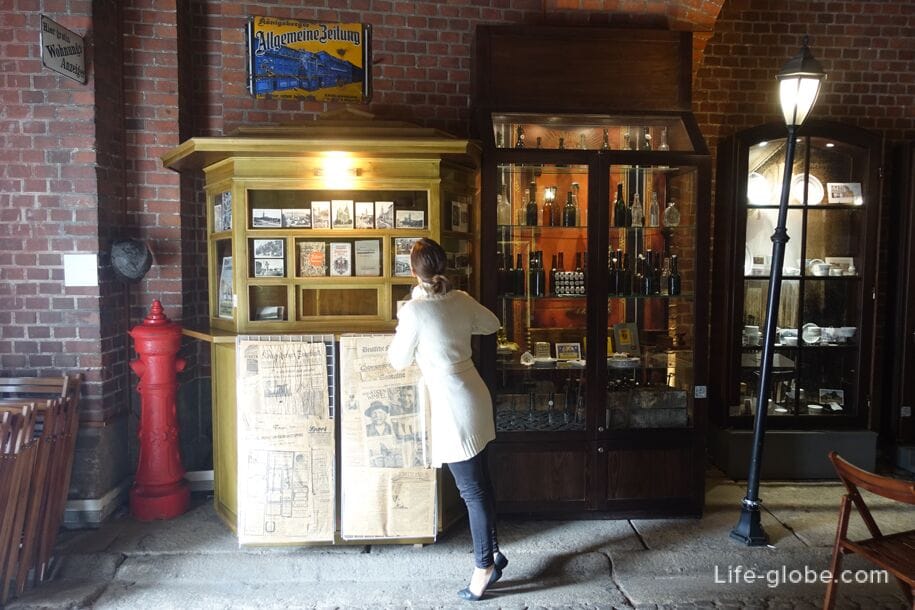
Friedland Gate (German name Friedländer Tor) is one of the seven preserved city gates of Kaliningrad. Located at the intersection of Kalinin Avenue and Dzerzhinsky Street, adjacent to the Yuzhny Park.
Previously, the Friedland Gate was part of the most fortified defensive complex of the Second Valny Bypass of Konigsberg (the Second Defensive Belt).
Currently, the Friedland Gate with bridgehead fortifications is an architectural monument of regional significance "Friedland Fortress Gate" and is subject to state protection.
The gates that we can see today were built last. The exact date of construction of the gate is unknown, approximately 1857 - 1862(65) years.
The gate is built of red ceramic brick in the Neo-Gothic style. The facade has a decorative design, including sandstone sculptures made by the Berlin sculptor V.L. Sturmer.
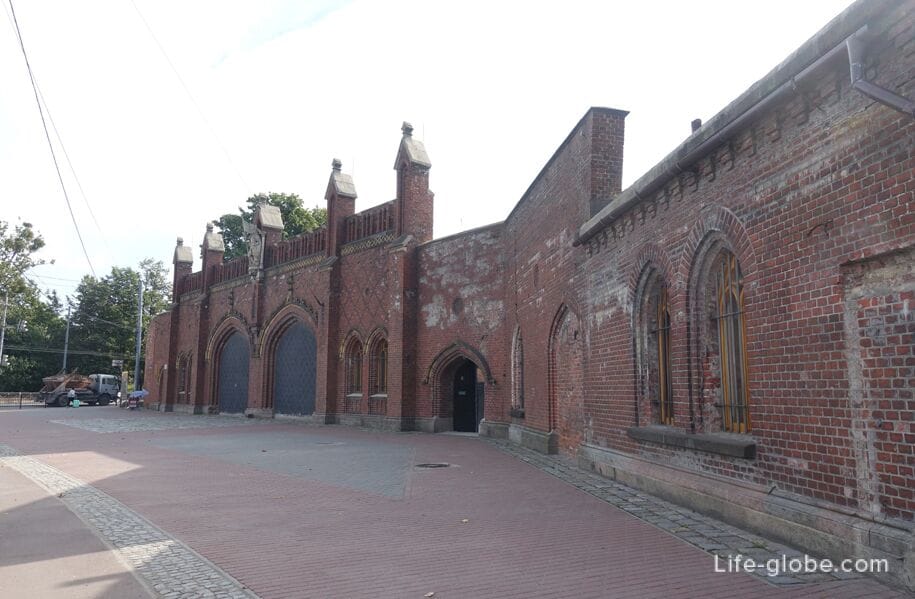
Two passageways passed through the gate, which are currently closed by large metal gates. The Friedland Gate also had two guard service rooms and several utility rooms.
The arches of the passageways stand out from the plane of the walls and are decorated with artificial yellow stone, while the tops of the arches are decorated with turrets-spires.
Along the top of the building there is a crenellated gallery-parapet with several turrets, decorated niches and a gable roof. In addition, sculptures adorn the gates on both sides: from the side of the city (now Kalinin Avenue) - sculpture of the Balga Castle commander and flag bearer of the Order of Friedrich von Zollern (a recreated copy of the sculpture); from the outside (from the courtyard) - sculpture of the 15th Grand Master of the Teutonic Order Siegfried von Feuchtwangen (restored in 2005).
Photo of the Fridladsky Gate from the city side (view from Kalinin Avenue)

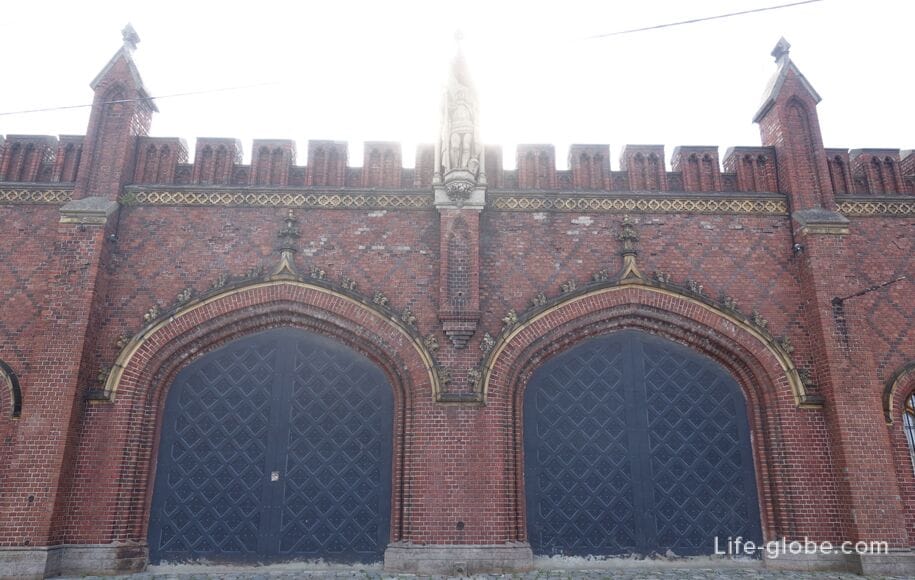
Architecture of the gate from the city side
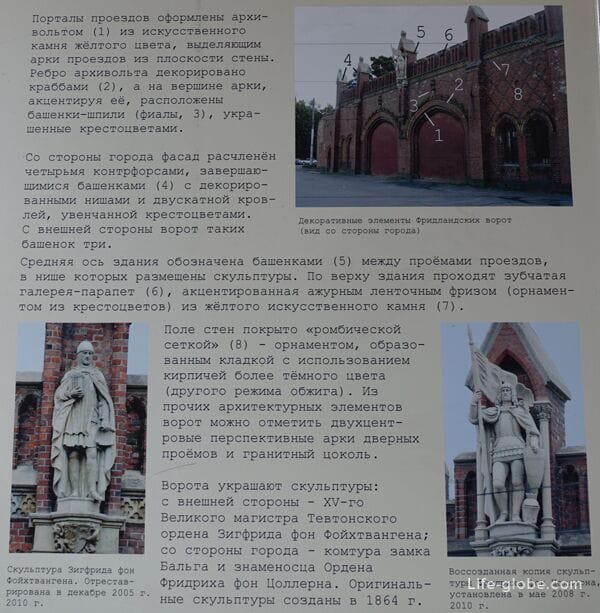
Photo of the gate from the side of the courtyard (outside)
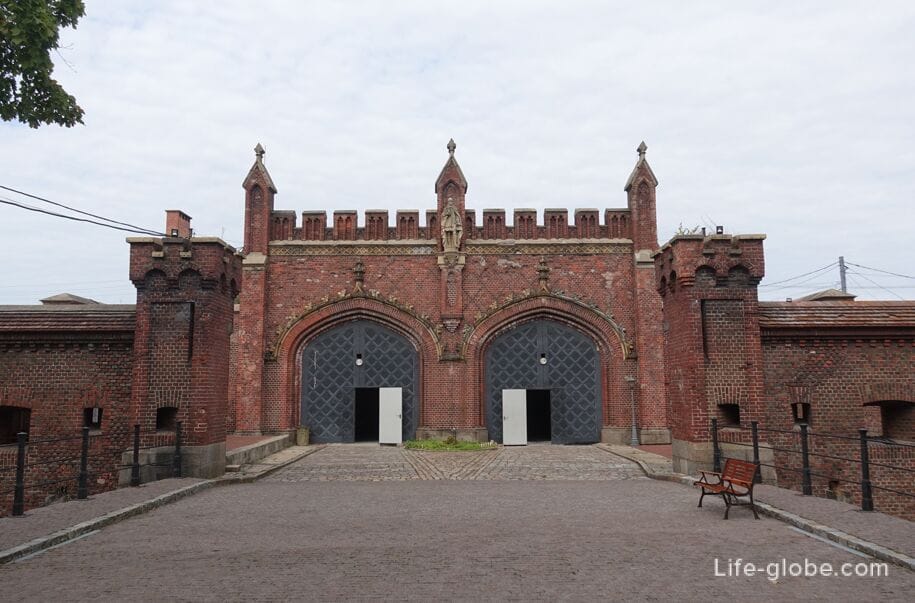
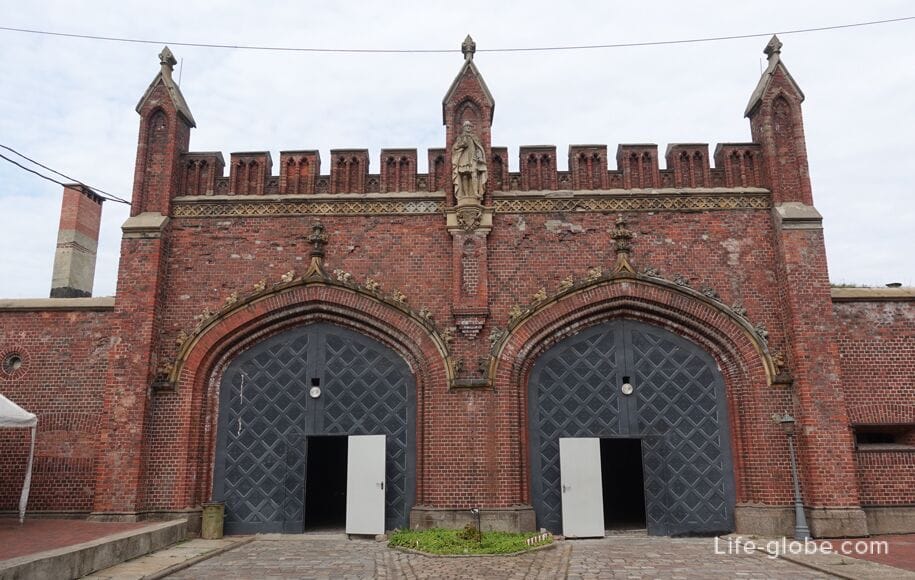

According to its intended purpose, the gate did not last long. The rapid development of military affairs in the 19th century led to the fact that by the end of the century the Second fortification could not protect the city from enemies. In 1910, all the gates were sold by the War Ministry to the city administration.
After the First World War, the Friedland Gate was closed for transport, and they became the entrance gate to the park created on the site of the defensive structures of the Southern Front.
However, during the Second World War, the Friedland Gate again became a military facility. During the storming of the city in 1945, the Friedland Gate was practically not damaged.
In the post-war period, the gates were used mainly for storage needs. In 1988, when clearing ponds in the Park of culture and Recreation named after the 40th anniversary of the Komsomol (now the Yuzhny Park), a considerable number of historical artifacts were collected. After that, it was decided to convert the Friedland Gate for museum exhibitions. So, as a department of the park, the museum existed from 2002 to 2007.
Since 2008, the Friedland Gate Museum has become the municipal museum of the city of Kaliningrad, which it is currently.
Admittedly, the Friedland Gate Museum, along with the Cathedral Museum, World Ocean Museum and the Altes Haus apartment museum has become for us one of the most informative and interesting museums in Kaliningrad. More about the Friedland Gate Museum...
